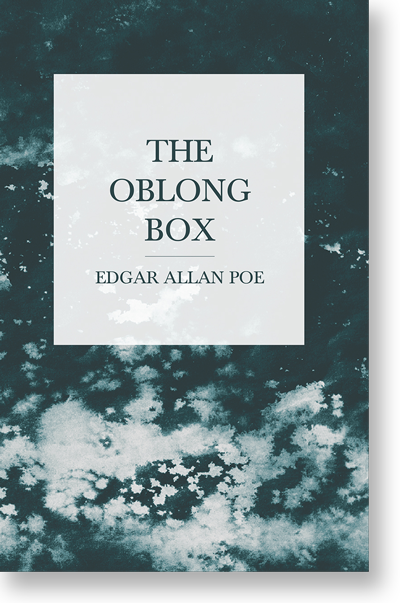The Oblong Box
The Oblong Box by Edgar Allan Poe was originally published in 1844.
After setting sail on from South Carolina aboard the ship “Independence”, the unnamed narrator is informed that an old college friend—Cornelius Wyatt—is also aboard with his wife, two sisters, and a large, mysterious box. One night the narrator witnesses Wyatt’s hideous wife leaving the room, and hears his old friend open the box and begin to weep. A powerful and chilling tale by the master of the short story form, The Oblong Box is highly recommended for fans of horror and mystery fiction.
Edgar Allan Poe (1809-1849) was an American author, editor, poet, and critic. Most famous for his stories of mystery and horror, he was one of the first American short story writers, and is widely considered to be the inventor of the detective fiction genre.
We are republishing this vintage text, The Oblong Box, in an affordable, high-quality edition complete with a specially commissioned new biography of the author.
Extract from Edgar Allan Poe’s The Oblong Box:
My old inquisitiveness now returned. There was no servant — that was a settled point. I looked, therefore, for the extra baggage. After some delay, a cart arrived at the wharf, with an oblong pine box, which was every thing that seemed to be expected. Immediately upon its arrival we made sail, and in a short time were safely over the bar and standing out to sea.
The box in question was, as I say, oblong. It was about six feet in length, by two and a half in breadth; — I observed it attentively, and like to be precise. Now this shape was peculiar; and no sooner had I seen it, than I took credit to myself for the accuracy of my guessing.
***
Here, at edgarallanpoe.co.uk, you can find the best of this fantastic author’s novels, short stories, essays, and poems.
You can also find a biography of Edgar Allan Poe, along with some of his most famous quotes and loved poems.
Through republishing works such as ‘The Oblong Box’, it is hoped that the writing of this author of mystery and the macabre, can continue to delight – almost two centuries after its initial publication.
